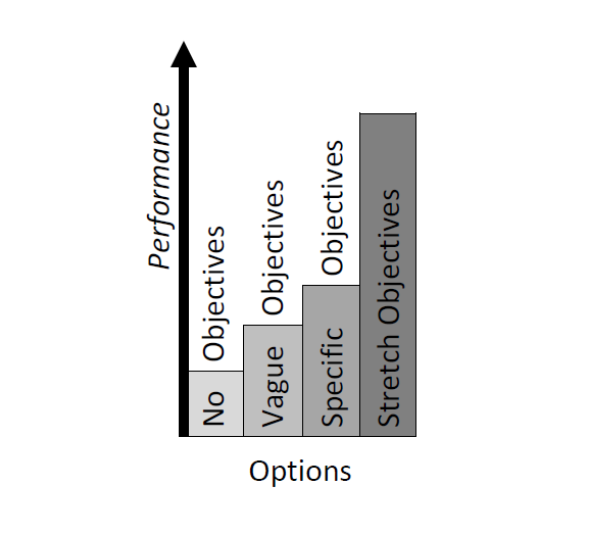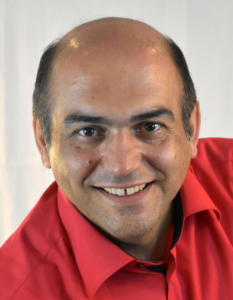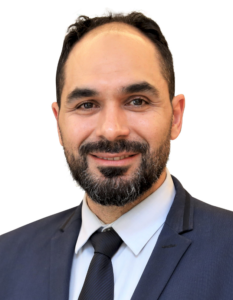Your cart is currently empty!
How to Avoid the “F” Word: Making Soft Skills Work
Patti P. Phillips, Ph.D. and Jack J. Phillips, Ph.D.
Originally Published June 5, 2020, on trainingmag.com.
Our partner in Australia recently commented about the dreaded “F” word. He was referencing the issue that some executives label parts of learning and development as “fluff,” the soft skills. This comment usually occurs when discussing soft skills funding with comments such as, “Let’s cut out all the fluff right now.” Or, “Maybe we don’t have enough funds for the fluff.” Or, “To trim the budget, eliminate all of that fluff.”
The irony is that these same executives will usually admit that it’s the soft skills programs that create the most admired organizations, the most sustainable organizations, the most innovative organizations, and the great places to work. Soft skills are critical and usually an executive’s top concern regarding the capability of their employees. We all need soft skills. Whether they are leadership development, communications, team building, empowerment, or even mindfulness, there is a need for these skills. The problem is that most executives haven’t seen the value of the soft skills programs in terms they appreciate and understand.
This is how it works. If executives perceive a particular activity as a cost, then they will control it, eliminate it, pause it, or maybe reduce it. Consequently, the activity does not get supported. Your influence is diminished, and yes, your funding is curtailed. However, if executives perceive the activity as an investment, they are willing to protect it, enhance it, or increase it, and this will allow you to have more influence, enjoy better support, build better business partnerships, and yes, protect the budget.
The challenge is to evaluate a major soft skills program, such as leadership development, culture, or change management at the impact and maybe ROI levels. Some learning professionals are reluctant to go down this path because they are concerned that soft skills programs do not deliver a positive ROI. This misconception is playing right into the hands of the executives who are calling our soft skills programs, “fluff.” The reality is that you can show the ROI, and the odds are high that the ROI is greater for soft skills programs than for hard skills programs. ROI Institute’s database of thousands of ROI studies clearly shows this to be true.
To ensure that soft skills programs deliver business results, three essential steps are necessary at the beginning of the implementation of a soft skills program.
1. Start with why by aligning the soft skills program to the business. This requires you to think out about why you are implementing this program. Why do participants need this skill? What will happen if this program isn’t implemented? What measure will improve if you implement this program? Sometimes this is just a matter of asking a person attending a soft skills program, such as leadership development to identify one or more key performance indicators that need to change with the team. This is very feasible if you have a dialogue with participants, key supporters, or the requestor of the program.
2. Make sure that the soft skills are the right solution. In the past, you may have implemented soft skills programs that were not the right solution. The program could not improve the business measure. This step requires some analysis or discussion with the most credible person, the leader attending a leadership development program. So, the question to ask is, “Can the business measure be improved by using these skills with the team?” If the answer is clearly yes, you have selected the right solution. Incidentally, yes will be the answer in most situations because soft skills are so flexible, and they can drive many different impacts. As one top executive told us, “It doesn’t matter so much which leadership development model we use, as long as we use it, support it, and focus on the impact of its use. The box shows the importance of these first two steps.”
Two Contrasting Examples
Stephen Covey, author of the best-selling soft skills book, The 7 Habits of Highly Effective People, suggested in a Habit #2 that we should begin with the end in mind.1 For top executives and sponsors, the end should be a business measure. Consider the two soft skills examples from two police departments.
Scotland Yard
A front-page headline in The Sunday Telegraph in London, suggested that “Scotland Yard has Wasted £10 Million on Leadership Training.” The Metropolitan Police have been accused by its officers of “wasting” £10 million on a leadership training program as the crime rate soared. More than 10,000 officers and staff at the rank of sergeant and above attended five days of training. A spokesman said that the course cost £5 million a year over two years.2 The course came amid increasing crime levels, including more than 60 murders in 2018. It also came at a time when the Sunday Times reported in a front-page story, “Under 5% of all burglaries and robberies solved: New shock figures reveal failure of police.”3
When asked to describe the success of this program, a Met spokesman said: “As London’s single biggest employer we absolutely must support our leaders by giving them the skills they need to do their jobs. Well-led and well-trained people deliver better, and ultimately that means Londoners get a great service.” The Met’s summary of the program said it is designed “as a lever to drive positive behaviors and to empower our staff to communicate and engage more effectively.”
The LD provider, Lane 4 Consulting, said that their leadership program helped people with “self-development (their identity, self-reflection, their behaviors, their impact on others)” as well as “creating meaning through shared identity.”
Kansas City Police
In Kansas City, Missouri, the 1910 Squad SWAT team had a reputation for having the most complaints of any unit. They were a very tough group aimed at arresting the criminal using whatever means necessary. Along the way, they left families, friends, and others upset to the point where they were complaining about excessive force. About three complaints per month were reported, and each complaint cost the city about $70,000. The chief of police determined this had to be fixed.4
Chip Huth was put in charge of the group to change their approach. Chip had been introduced to an LD concept from the Arbinger Institute. The concept’s approach was about transforming an inward mindset to an outward mindset. The team began to realize that their focus had been entirely inward, focusing on meeting their goals, and in these situations, they perceived people and pets involved as objects. When they changed their thinking and subsequent approach, there was a dramatic difference. The complaints reduced from three per month to zero, and this result has continued for several years. The outward mindset training program yielded a very high ROI calculation of more than 2,000%, a low-cost program solving an expensive problem.
Contrast the difference between these two police examples. In Scotland Yard, the definition of success at the end of the program was behavior. In Kansas City, it was impact because the program began with the end in mind with the business impact measure of citizen complaints.
This concept is simple, yet powerful. You start where you want to finish! Success doesn’t occur until impact is achieved. It suggests that the evaluation of soft skills should not stop at the learning level (to make sure that the participant has learned the competencies), or even at the application level (to make sure that the right behaviors are in place). Major soft skills programs should be evaluated at the impact level. What impact are the participants having with their actions, activities, and behaviors? These impacts are typically output, quality, time, and costs, for the tangible measures, and teamwork, collaboration, and engagement as the intangible measures. Failure to evaluate at the impact level might be the problem for Scotland Yard, but it wasn’t for the Kansas City SWAT Team. Impact measures, like citizen complaints, are everywhere in all types of organizations.
3. Expect success. This means that we define the success of soft skills at the business impact level and clearly communicate that message to all the stakeholders. You should also set objectives for reaction, learning, application, and impact for important programs. These objectives are provided to the various stakeholders, designers, developers, facilitators, and even the supporters of soft skills programs, such as the managers of the participants. Each role will design for impact and support for impact, and this makes a major difference. Then when you evaluate the programs, you are more likely to have the success you need. Essentially, this is designing for impact, and it is the impact when converted to money compared to the cost of the program that delivers a positive ROI.5
There has been much research about the power of objectives conducted since the 1960s and documented in many books, including our books, such as Beyond Learning Objectives: Develop Measurable Objectives That Link to the Bottom Line.6 We are also impressed with what John Doerr presented in his best-selling book, Measure What Matters: How Google, Bono, and the Gates Foundation Rock the World with OKRs.7 In John’s terminology, OKRs are objectives with key results.
Figure 1. summarizes the research. If you have no objectives, you will have some performance, but usually not much. You will have more results if you develop vague objectives such as “decrease turnover with critical talent” or “prevent employee complaints.” That creates an expectation, but it’s not very specific. It is much better to have very specific objectives such as “decrease turnover from 20 percent to 10 percent in six months” or “decrease employee complaints by 15 percent in six months.” These are objectives with key results, OKRs in John Doerr’s terminology.
Figure 1. The Power of Objectives

Still, there is another issue: the OKRs are usually listed as a minimum acceptable performance. This is how you frame objectives in learning programs for example. Whether it is a reaction objective, learning objective, application objective, or impact objective—it’s the minimum acceptable performance. You want at least this much. However, if you have stretch objectives, you have even more performance. The ultimate performance occurs when you have participants stretch themselves. You continue to have a minimum acceptable amount, but you would like them to do more with these stretch objectives.
With this type of beginning, the program is destined to deliver results. For a copy of a case study that uses these concepts to show the value of a soft skills program, please contact us at ROI Institute. We will be happy to send it to you.
References
- Covey, Stephen R. The 7 Habits of Highly Effective People: Restoring the Character Ethic. New York, NY: Simon & Schuster. 1989.
- Dixon, H. “Scotland Yard ‘wasting’ £10M on leadership training.” The Sunday Telegraph. June 3, 2018. 1 -2.
- Ungoed-Thomas, J., K. Shveda, S. Joiner, and D. Collins. “Under 5% of all burglaries and robberies solved.” Sunday Times. June 17, 2018. 1.
- The Arbinger Institute. The Outward Mindset: How to Change Lives and Transform Organizations, Second Edition. Oakland, CA: Berrett Koehler Publishers, 2019
- Phillips, Patti P., Jack J. Phillips, and Rebecca L. Ray. Proving the Value of Soft Skills: Measuring Impact and Calculating ROI. Alexandria, VA: ATD Press, 2020.
- Phillips, Jack J., and Patti P. Phillips. Beyond Learning Objectives: Develop Measurable Objectives That Link to the Bottom Line. Alexandria, VA: ASTD Press, 2008.
- Doerr, John, and Larry Page. Measure What Matters: How Google, Bono, and the Gates Foundation Rock the World with OKRs. New York, NY: Penguin Books, 2018.


























